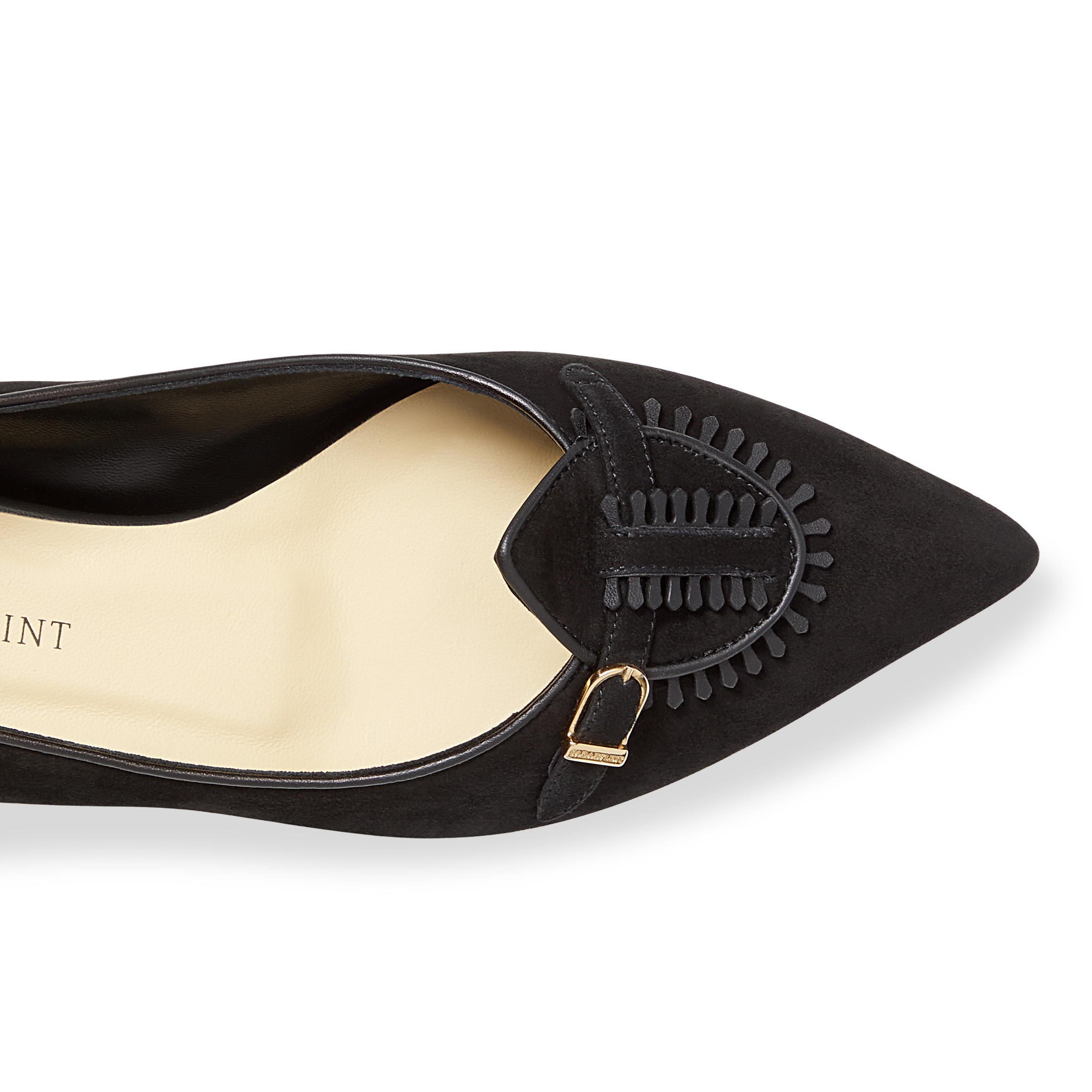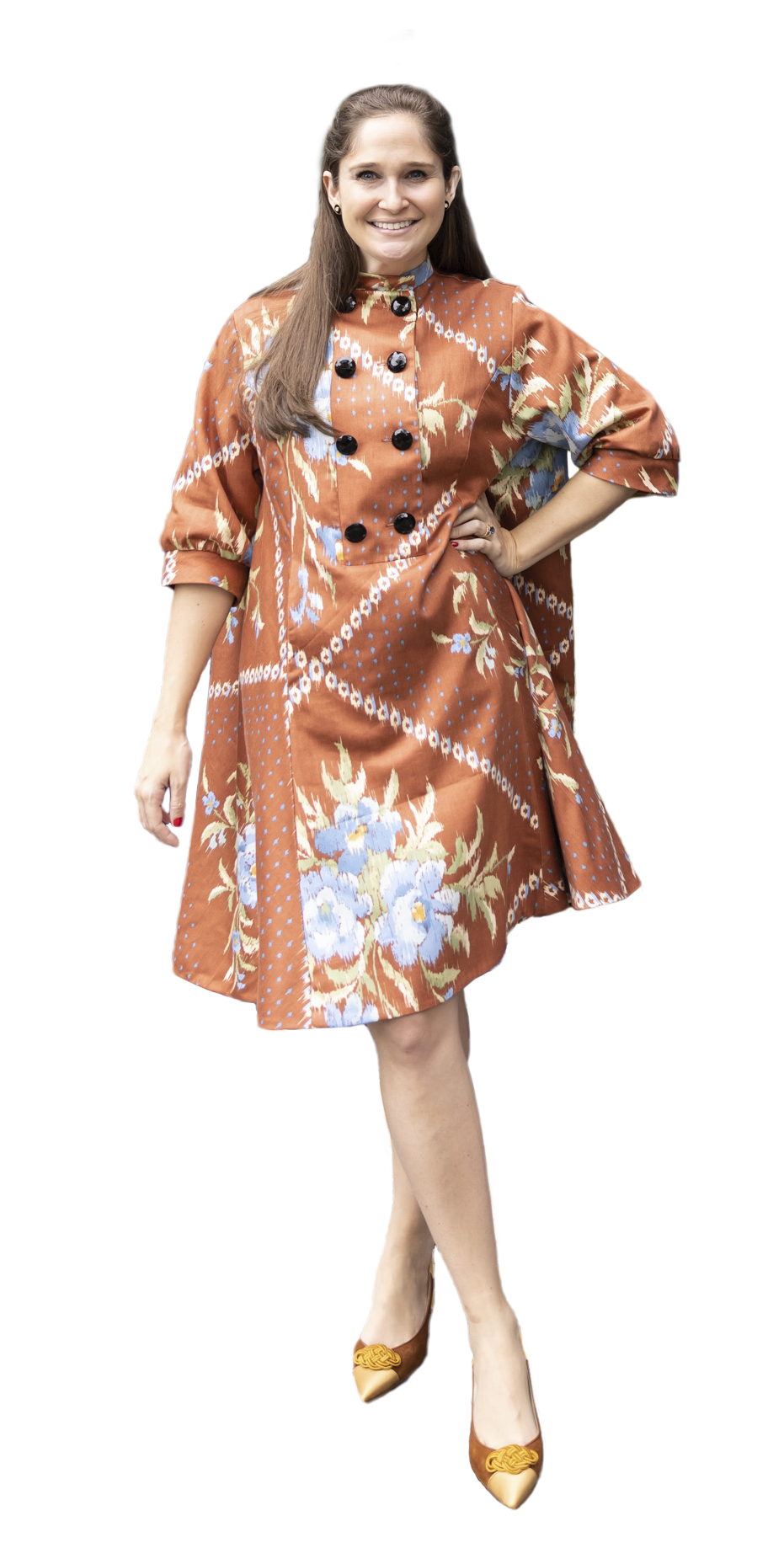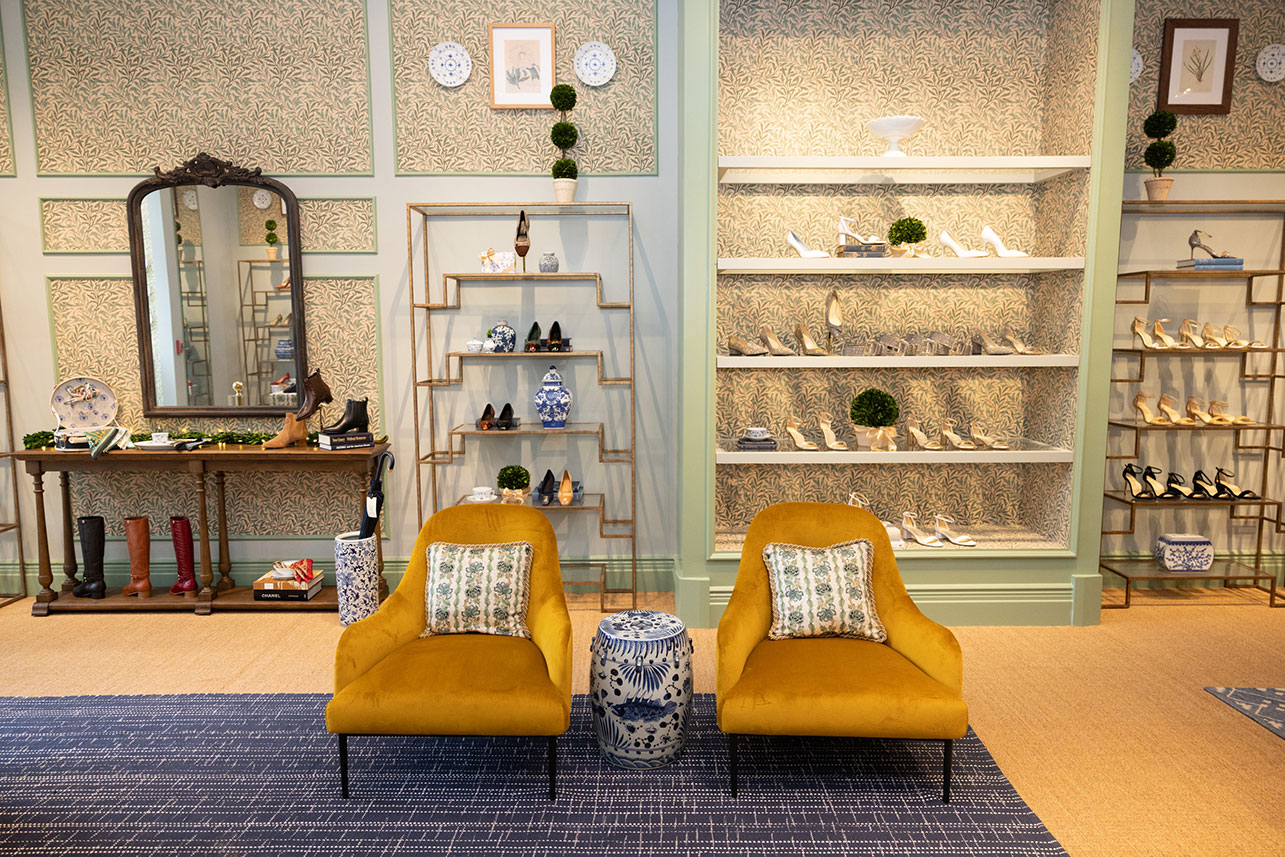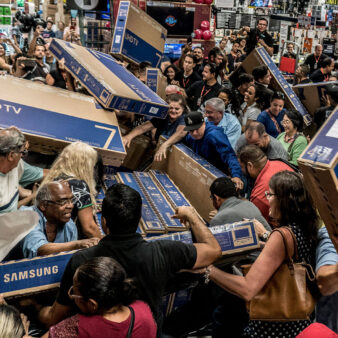SARAH FLINT ’10 BUILT HER HOT SHOE BRAND ON A FOUNDATION OF COMFORT


As a design student living in New York City, Sarah Flint faced a classic fashion conundrum. She loved beautiful shoes—but also craved comfort.
Abandoning designer styles because of aching arches was not an option for Flint, who’d been fashion-obsessed since a pair of gleaming tap shoes with tiny stacked heels captivated her 5-year-old self. So, with help from a cobbler who stretched toe boxes and added rubber soles and extra padding, she hacked her favorite luxury designs to suit her busy life. Problem solved.
Or was it?
“It just seemed crazy to me there wasn’t a brand with all that built into the shoes,” says Flint, Accessories Design ’10.
The opportunity was obvious—and irresistible. The realization sparked a career-defining mission to merge luxury and function for the modern shoe consumer. No hacks needed.

A decade later, Flint’s namesake brand is beloved by working women with regular commutes, and also by those whose red-carpet glamour makes headlines, from Lady Gaga to Gabrielle Union to Meghan Markle.
The dizzying success of the company—launched in 2013 when Flint was just 25 years old—is no surprise; Flint’s determined pursuit of a design career was rooted in a lifelong love of fashion. From a young age, she was confident in her sense of style; in one early phase, she embraced dresses, even on the most unexpected occasions.
“When we went skiing, my mom would have to stuff my dress into my snowsuit,” she says. “I had a big tube around me essentially.”
Flint grew up sketching her own shoe designs and cultivating an eye for beauty while visiting ateliers with her grandmother, an artist who lived in Paris.
“I always knew what I wanted to do.” she says.
She understood if she promised comfort alongside luxury, she needed to deliver. Immediately after graduating from FIT, she went to Italy for a three-month immersion program in patternmaking and prototyping at the Arsutoria School in Milan.
“This was really intense construction-type stuff,” she says with a laugh.
The granular details she encountered in class, along with visits to tanneries and artisan factories used by luxury brands like Chanel, helped shape Flint’s vision for her company.
She returned to New York, brimming with ideas. While working as a nanny, she created a business plan, took a class in fashion law at New York University, and began a collection that attended to the less glamorous, but critical, aspects of shoe design—durable heel caps, padded footbeds—along with the elegant styles she conjured in her sketchbook.

After lining up investors, she persuaded a former teacher at Arsutoria to become her production manager and, with his help, began manufacturing her designs in a traditional factory in Vigevano, a town outside Milan renowned for shoemaking.
So far, so good—but after launching the brand, Flint faced a challenge familiar to new designers: endlessly knocking on doors to establish a foothold in a fiercely competitive industry. Again and again, the big department stores turned her down.
Her first season, Flint managed to place the shoes in two boutiques on consignment—“which no one should ever do, but I did because I needed to get in”—and tried to remain positive.
“I was super frustrated and upset and anxious,” Flint says. “But I knew that the shoes were really good, and I knew from trunk shows that women loved them. I just needed to get them in front of more people. And so I kept going and going.”
Barneys New York finally bit, featuring her collection in the fall of 2015.
“I was really excited and happy but also nervous,” she says, thinking at the time, “‘What if the sell-through isn’t amazing and then they don’t reorder?’”
But it was, and they did. Other venues followed: Bloomingdale’s; popular online sites like Shopbop and Moda Operandi; and Mitchells and Richards, two luxury stalwarts in Greenwich, Connecticut.

Flint continued to expand her brand through social media—and some exposure from a growing faction of celebrity fans. The arrival of the 2017 Invictus Games marked the kind of unforeseen moment that designers dream about. The international competition for wounded veterans was founded by Prince Harry; at that year’s event in Toronto, Canada, he and Meghan Markle made their first public appearance. Markle’s instantly iconic outfit, chronicled in fashion magazines throughout the world, featured ripped jeans, a white button-up shirt, and a pair of tan, pointed-toe flats with an asymmetrical bow—the Natalie flats by Sarah Flint.
The frenzied response culminated in a waiting list of 25,000 besotted customers and invaluable name recognition. Yet, even in the event’s aftermath, a sense of unease nagged at Flint.
When she first launched the company, luxury brands seemed to need department stores for validation; now, she wasn’t so sure. Flint felt frustrated by a lack of control over in-store issues like assortment and markdown. One season her shoes might be displayed at the top of the escalator and fly off shelves; in another, they’d be hidden in a dim corner and barely move. Moreover, the arrival of direct-to-consumer brands like Everlane and Naadam was changing the face of retail.
When asked earlier that year what she would do if she were starting over, she replied, “I would start as a direct-to-consumer brand and offer the shoes at half the price.”
The question—and her quick response—stuck with her. Flint talked to members of her company’s board of directors and approached supermodel Cindy Crawford, a longtime fan of the shoes, with a pitch to join the venture as an investor and marketing partner. Flint told Crawford she wanted her own friends to be able to purchase the shoes, but the price point (roughly $750) made that impossible. Crawford, who launched the skin-care brand Meaningful Beauty with hopes of broadening access to luxury products, came onboard.
“And then I did something crazy,” Flint says.
She canceled the spring and summer orders and, in November 2017, announced the company’s immediate pivot to direct-to-consumer. The brand’s website went offline for a week, reemerging with a message to customers that the quality of the handcrafted shoes would remain the same, but—by streamlining the design process and removing a 25% to 30% markup added by wholesalers—the price for a typical pair would drop to about $365.
Flint held her breath—and the customers followed: The overall business grew 200% in 2018. Though the pandemic stalled sales in 2020, the company’s growth has remained on track ever since.
The reboot gave Flint more control over her brand while putting her in closer touch with her customers.
In 2022, after running successful pop-up shops in major cities, she opened three permanent stores, in Nashville, Dallas, and Atlanta, to connect with the brand’s loyal customer base and reach a new audience. She worked with women-founded and -run vendors to furnish the boutiques. More locations are in the works.
She often seeks feedback at stores and among the brand’s 119,000 Instagram followers. Flint designed the Rosie loafer because women requested something between a flat and a heel, with just the right amount of lift.

“I think a lot of times, old school designers would be like ‘I’m the designer; I do what I want,’” Flint says. But for her, the designer’s vision isn’t the only consideration.
Instagram introduces customers to the brand and also gives them a glimpse of Flint herself—visiting Venice, baking a raspberry galette, and fielding customer Q&As ranging from where to buy tea sets (answer: go vintage) to the best part of living with her parents during lockdown (answer: her mom’s chocolate chip cookies and happy hour “quarantinis”).
Flint is convinced that modern consumers want luxury brands to change their approach. “They want value,” she says. “They’re not going to overpay. They care about sustainability. They care about who is behind a brand, not just how fancy it is.”
Once again, Flint sees an irresistible opportunity on the horizon.
“I think it’s time for that next great American lifestyle brand, and I think that brand really needs to be built for this generation of consumers,” she says.
And with a range of new products—scarves, headbands, table linens, and more—introduced over the past year, Flint has already started.
“I’m always looking to the next thing,” she says. “Right now, I think it’s the ability to take the best of luxury and the best of direct-to-consumer and create that lifestyle brand. That is really very exciting to me.”
